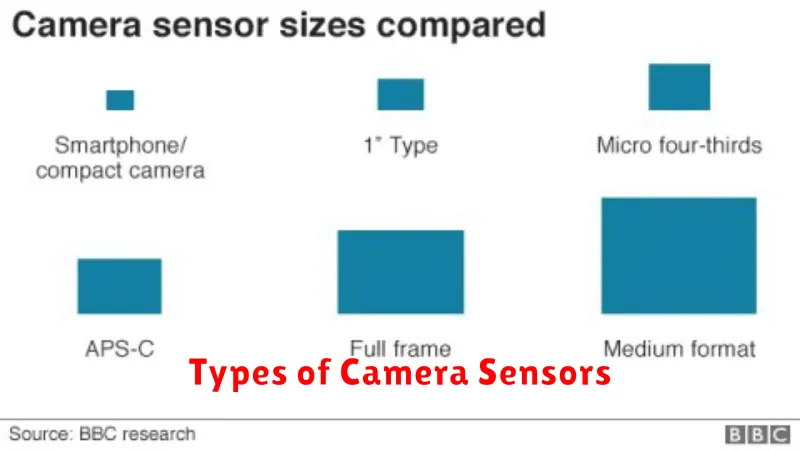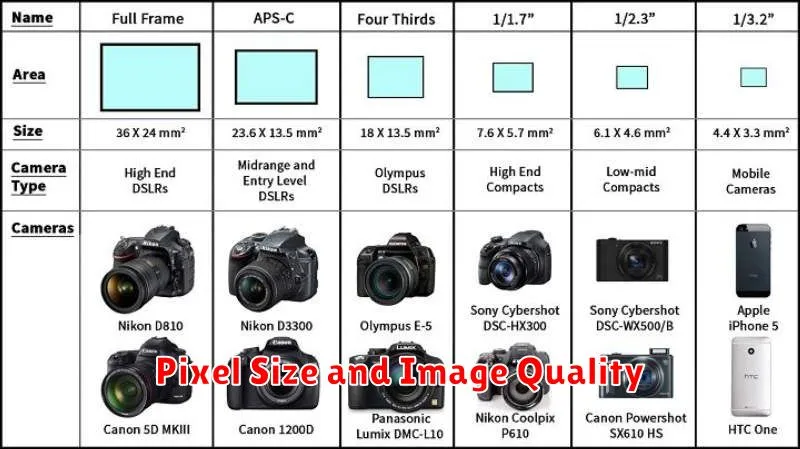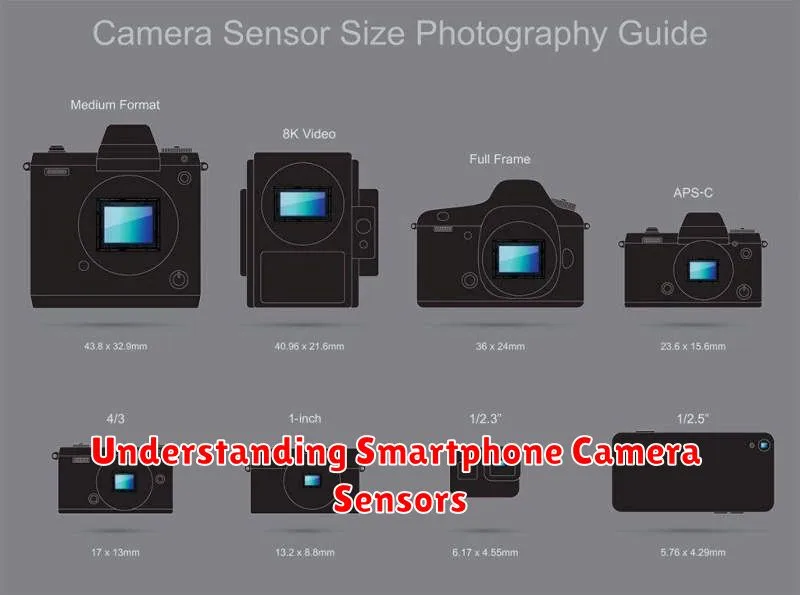Understanding the intricacies of smartphone camera sensors is crucial for anyone looking to capture high-quality images and videos. The sensor is the heart of any camera system, responsible for converting light into the digital information that forms your pictures. This article will delve into the key aspects of these sensors, explaining how they work and what factors contribute to their performance. We will explore the different types of smartphone camera sensors available, including their sizes, resolutions, and technologies. This knowledge will empower you to make informed decisions when choosing your next smartphone, enabling you to select a device that meets your specific photography needs.
From understanding sensor size and megapixel count to exploring the nuances of pixel size and sensor technology, this guide will provide a comprehensive overview of smartphone camera sensors. Whether you are a casual photographer or an aspiring professional, understanding these core components will significantly improve your ability to capture stunning visuals. Learn the secrets behind capturing breathtaking photos and videos with your smartphone by mastering the fundamentals of camera sensors.
How Smartphone Cameras Work
Smartphone cameras, despite their compact size, utilize the same fundamental principles as traditional cameras. They capture light and convert it into a digital image. This process involves several key components working in concert.
First, light enters the camera through the lens. The lens focuses the light onto the sensor, a crucial component that plays a vital role in image quality. The sensor is made up of millions of tiny photodiodes, also known as pixels. Each photodiode measures the intensity of light hitting it.
This light information is then converted into an electrical signal. An image processor, a specialized chip within the smartphone, takes this raw data and performs a series of complex operations. These include adjusting white balance, color saturation, and sharpness, ultimately creating the final image.
The image processor also handles other important functions, such as noise reduction and applying various image effects. The final image is then stored in the phone’s memory, ready to be viewed, edited, or shared.
What Is a Sensor and Why It Matters
At its core, a sensor is a device that detects and responds to some type of input from the physical environment. This input could be anything from light and sound to temperature and pressure. The sensor then converts this input into a signal that can be read by another device, often an electronic circuit.
In the context of a smartphone camera, the sensor is the component that captures the light entering through the lens. It’s effectively the digital equivalent of film in a traditional camera. The sensor is responsible for recording the intensity and color of the light, which is then processed to create the final image.
The sensor plays a critical role in determining the quality of the image. Its size, resolution, and technology directly impact aspects such as low-light performance, dynamic range, and overall image detail.
Types of Camera Sensors

Smartphone cameras utilize various sensor types, each with its own strengths and weaknesses. Understanding these differences is crucial for choosing the right phone for your photography needs. The most common types include CMOS (Complementary Metal-Oxide-Semiconductor) and CCD (Charge-Coupled Device), though CCDs are less prevalent in modern smartphones.
CMOS sensors are widely used due to their lower power consumption, faster readout speeds, and cost-effectiveness. They excel in providing a good balance between image quality and performance.
While less common now, CCD sensors were previously favored for their superior image quality, particularly in low-light conditions. However, their higher power consumption and slower readout speeds have led to their decline in the smartphone market.
Within the CMOS category, there are further distinctions such as backside-illuminated (BSI) sensors which improve light capture and therefore low-light performance.
Pixel Size and Image Quality

Pixel size plays a crucial role in determining image quality, particularly in low-light conditions. Larger pixels are generally better at collecting light, leading to improved signal-to-noise ratio and reduced noise in images. This results in cleaner images with more detail, especially in dimly lit scenes.
Smaller pixels, while allowing for higher resolution images, can struggle in low light, producing images with more noise. This is because they gather less light individually. The balance between resolution and pixel size is a key consideration in sensor design.
Pixel size is often measured in micrometers (µm). A common trend is for manufacturers to group smaller pixels together using techniques like pixel binning to improve light gathering capabilities in challenging lighting conditions. This effectively simulates larger pixels, sacrificing resolution for improved low-light performance.
Sensor Size vs Megapixel Count
One of the most common points of confusion when discussing smartphone cameras is the difference between sensor size and megapixel count. While both contribute to image quality, they play distinct roles.
Sensor size refers to the physical dimensions of the camera sensor. A larger sensor can capture more light, leading to better low-light performance, improved dynamic range, and shallower depth of field (background blur). Think of it like a bucket collecting rainwater – a larger bucket collects more water.
Megapixel count, on the other hand, refers to the number of pixels that make up the image. More megapixels allow for larger prints and more cropping flexibility. However, more megapixels on a small sensor can lead to smaller individual pixels, which can negatively impact low-light performance.
In essence, sensor size impacts the quality of the light captured, while megapixels determine the resolution or detail of the image. A larger sensor is generally more important for overall image quality than a high megapixel count, especially in challenging lighting conditions.
Impact on Low-Light Photography

Sensor size significantly impacts a smartphone’s low-light photography capabilities. A larger sensor can gather more light, which translates to better image quality in dimly lit scenes. This is because a larger sensor has larger photodiodes, the components that convert light into electrical signals. Larger photodiodes can collect more photons, resulting in a stronger signal and less noise.
Noise, often appearing as graininess or artifacts in an image, is more prominent in low-light conditions. A larger sensor’s ability to gather more light helps mitigate noise, leading to cleaner and more detailed images. Conversely, a smaller sensor struggles in low light, often producing noisy and less detailed images. This is a key factor differentiating smartphone camera performance in challenging lighting situations.
Choosing Phones with Good Sensors
Selecting a smartphone with a high-quality camera sensor is crucial for capturing stunning photos and videos. Several key specifications contribute to a sensor’s overall performance.
Sensor size plays a significant role. Larger sensors generally capture more light, resulting in better low-light performance and improved dynamic range. Look for specifications like 1/1.56″ or larger for noticeable improvements.
Pixel size is another important factor. While higher megapixel counts can be appealing, larger individual pixels are often more beneficial. They gather more light, leading to reduced noise and better overall image quality. Consider pixels sizes of 1.4µm or larger.
Finally, consider the sensor technology. Look for newer sensor technologies, as these often incorporate advancements in light capture and processing, leading to enhanced image quality.

